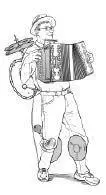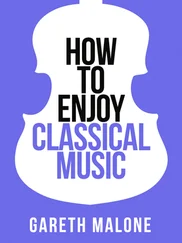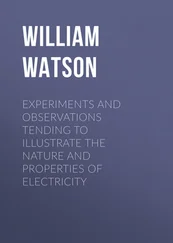Mark Changizi - Harnessed - How Language and Music Mimicked Nature and Transformed Ape to Man
Здесь есть возможность читать онлайн «Mark Changizi - Harnessed - How Language and Music Mimicked Nature and Transformed Ape to Man» весь текст электронной книги совершенно бесплатно (целиком полную версию без сокращений). В некоторых случаях можно слушать аудио, скачать через торрент в формате fb2 и присутствует краткое содержание. Год выпуска: 2011, Издательство: Perseus Books Group, Жанр: Старинная литература, на английском языке. Описание произведения, (предисловие) а так же отзывы посетителей доступны на портале библиотеки ЛибКат.
- Название:Harnessed: How Language and Music Mimicked Nature and Transformed Ape to Man
- Автор:
- Издательство:Perseus Books Group
- Жанр:
- Год:2011
- ISBN:нет данных
- Рейтинг книги:5 / 5. Голосов: 1
-
Избранное:Добавить в избранное
- Отзывы:
-
Ваша оценка:
- 100
- 1
- 2
- 3
- 4
- 5
Harnessed: How Language and Music Mimicked Nature and Transformed Ape to Man: краткое содержание, описание и аннотация
Предлагаем к чтению аннотацию, описание, краткое содержание или предисловие (зависит от того, что написал сам автор книги «Harnessed: How Language and Music Mimicked Nature and Transformed Ape to Man»). Если вы не нашли необходимую информацию о книге — напишите в комментариях, мы постараемся отыскать её.
Harnessed: How Language and Music Mimicked Nature and Transformed Ape to Man — читать онлайн бесплатно полную книгу (весь текст) целиком
Ниже представлен текст книги, разбитый по страницам. Система сохранения места последней прочитанной страницы, позволяет с удобством читать онлайн бесплатно книгу «Harnessed: How Language and Music Mimicked Nature and Transformed Ape to Man», без необходимости каждый раз заново искать на чём Вы остановились. Поставьте закладку, и сможете в любой момент перейти на страницу, на которой закончили чтение.
Интервал:
Закладка:
Relax, Beethoven—no need to roll over. If the music-sounds-like-movement theory is correct, then it is best viewed as a cipher key for decoding music. It gives our conscious, scientific selves the ability to translate the sounds of music back into the movements of humans (something our own lower-level auditory areas already know how to do). But knowing how to read the underlying movement meaning of music does not mean one knows how to write music. Just as I can read great literature but cannot create it, a successful music-is-movement theory will allow us to read the meaning of music but not to compose it. Creating good music requires knowing which human movements are most expressive, and making music sound like that. But a theory of expressive human movements is far harder to formulate than a theory of human movements generally. All I can hope to muster is a general theory of the sounds of human movements, and so the theory will be, at best, a decoder ring, not a magical composer of great music.
But a decoder ring may nevertheless be a big step forward for composers. Composers have thus far managed to create great music—great auditory stories of human movements, in our theory’s eyes—without explicitly understanding what music means. With a better understanding of the decoder ring, composers can consciously employ it in the creative process. Similarly, the four-dimensional alien has much better odds of mimicking artistic photography once he has figured out what photographs actually look like. Until then, the alien’s attempts at artistic photography wouldn’t even look like photography. (“Is this photographic art?” the alien asks, holding up a plaid pattern.) The aliens must know what basic visual elements characterize photography before they can take it to the next level, start to guess which arrangements of those elements are superior, and try their own tentacles at art photography. You can’t have expressive photography without photography, and you can’t have expressive human movement sounds without human movement sounds. The theory of music I’m arguing for, then, does not explain what makes great music. But the theory would nevertheless be a big step forward for this. Like the alien’s basic discovery, it will enable us to pose hypotheses about why some music is great—by referring to the expressive movements and behaviors it depicts.
This decoder ring will, then, be helpful to composers, but it cannot substitute for the expressive antennae composers use to create musical art. For choreographers and movie composers, this decoder ring is potentially much more important. Choreographers and movie composers are deeply concerned with the mapping of music to movement (the principal domain of choreography) or from movement to music (the principal domain of movie composers), and so a decoder ring that translates one to the other is a potential holy grail. In reality, though, it’s not as simple as that. A given piece of music probably does not determine particular dance moves (although your auditory system may pick out just one movement)—a good choreographer needs an artistic head to pick the most appropriately expressive movement of the many possible movements consistent with the music. And for any given movie visual, a good film composer will have to use his or her artistic talents to find an appropriately expressive theme for the scene. Any music–movement decoding devices made possible by this book won’t put choreographers or movie composers out of work, but such a decoder may serve as an especially useful tool for these disciplines, providing new, biologically justified constraints on what makes a good music-movement match.
So, what is great music? I don’t know. My only claim is that it tends to be written in the language of human movement. Music is movement. But it is not the case that movement is music. Just as most stories are not interesting, most possible movement sounds are not pleasing. What good composers know in their bones is which movement sounds are expressive, and which sequences of movement sounds tell an evocative story. But they also know even deeper in their bones which sounds sound like humans moving, and that is what we’ll be discussing next, in the upcoming chapter and in the Encore.
[1] Researchers in this tradition include Alf Gabrielsson, Patrick Shove, Bruno H. Repp, Neil P. McAngus Todd, Henkjan Honing, Jacob Feldman, and Eric F. Clarke (see his Ways of Listening ).

Chapter 4
Musical Movement
Serious Music
This dictionary of musical themes, by Harold Barlow and Sam Morgenstern, supplies an aid which students of music have long needed . . . We should now have something in musical literature to parallel Bartlett’s Familiar Quotations . Whenever a musical theme haunted us, but refused to identify itself no matter how much we scraped our memory, all we should have to do would be to look up the tune in Barlow and Morgenstern, where those ingenious dictionary-makers would assemble some ten thousand musical themes, with a notation-index or theme-finder, to locate the name of the composition from which the haunting fragment came, and the name of the composer.
– John Erskine, 1948, in the preface to Barlow and Morgenstern’s A Dictionary of Musical Themes .
In the 1940s it must have been laborious to construct a dictionary of musical themes, but that’s what Barlow and Morgenstern went ahead and did. It is unclear whether anyone ever actually used it to identify the tunes that were haunting them, and, at any rate, it is obsolete today, given that our iPhones can tell us the name and composer of a song if you merely let it listen to a few bars. The iPhone software is called “Shazam,” a great advance over locutions such as, “Hey, can you Barlow-and-Morgenstern this song for me?” Now, in defense of Barlow and Morgenstern, Shazam does not recognize much classical music, which makes me the life of the party when someone’s Shazam comes up empty-handed in the attempt to identify what the pianist is playing, and I pull out my 642-page Barlow and Morgenstern and tell them it is Chopin’s Concerto No. 1 in E minor. And, I add, it is the third theme occurring within the second movement . . . because that’s how I roll.
The other great use I have found for Barlow and Morgenstern’s dictionary is as a test bed for the movement theory of music. Each of its 10,000 themes nicely encapsulates the fundamental part of a tune—no chords, no harmony, no flourishes. Most themes have around one to two dozen notes, and so, in movement terms, they correspond to short bouts of behavior. (Figure 18 shows three examples of themes from Barlow and Morgenstern.) There are at least two good reasons for concentrating my efforts on this data set.

Figure 18. Example themes from the Barlow & Morgenstern dictionary. Top : A theme from Bach’s Partita, No. 1 in B minor. Middle : A theme from Beethoven’s Sonata No. 7 in D. Bottom : A theme from Sibelius’s Quartet Op. 56 “Voces Intimae.”
First, the dictionary possesses a lot of themes—10,000 of them. This is crucial for our purposes because we’re studying messy music, not clean physics. One can often get good estimates of physical regularities from a small number of measurements, but even though (according to the music-is-movement theory) music’s structure has the signature of the physical regularities of human movement, music is one giant leap away from physics. Music is the product of cultural selection among billions of people, thousands of years, and hundreds of cultures, and so we can only expect to see a blurry signature of human movement inside any given piece or genre of music. On top of that, we have the wayward ways of composers, who are often bent on marching to their own drum and not fitting any pattern they might notice in the works of others. Music thus is inherently even messier than speech, and that’s why we need a lot of tunes for our data. With enough tunes, we’ll be able to see the moving humans through the fog.
Читать дальшеИнтервал:
Закладка:
Похожие книги на «Harnessed: How Language and Music Mimicked Nature and Transformed Ape to Man»
Представляем Вашему вниманию похожие книги на «Harnessed: How Language and Music Mimicked Nature and Transformed Ape to Man» списком для выбора. Мы отобрали схожую по названию и смыслу литературу в надежде предоставить читателям больше вариантов отыскать новые, интересные, ещё непрочитанные произведения.
Обсуждение, отзывы о книге «Harnessed: How Language and Music Mimicked Nature and Transformed Ape to Man» и просто собственные мнения читателей. Оставьте ваши комментарии, напишите, что Вы думаете о произведении, его смысле или главных героях. Укажите что конкретно понравилось, а что нет, и почему Вы так считаете.












